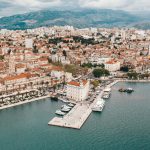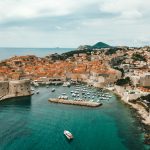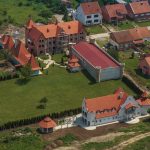ZAGREB, August 28, 2019 – Prime Minister Andrej Plenković on Wednesday described the GDP growth of 2.4% in the second quarter of 2019 as good and positive news, underscoring that the government is doing everything to strengthen the Croatian economy’s resilience to a possible new recession.
The State Bureau of Statistics (DZS) on Wednesday released its initial estimate according to which GDP in Q2 rose by 2.4% on the year. That is the 20th quarter in a row that GDP increased but significantly slower than the 3.9% rate in Q1.
“That means that we are at the level of the first six months of a 3.15% growth rate which I think is absolutely in line with the European Commission’s summer forecast released a few weeks ago. That is still above the average growth that we ourselves forecast in our Economic Guidelines and Fiscal Policy,” Plenković told reporters in the eastern town of Osijek.
The European Commission forecasts an annual GDP growth for Croatia of 3.1% while the government has estimated that it will be 2.8%.
Plenković says that the data released today are showing a large growth of gross fixed capital formation, rising exports, and considering a high basis, a slightly slower rise in imports in the second quarter, and added that it is necessary to work on increasing industrial production.
The greatest positive contribution to GDP in Q2 was generated with the growth of gross fixed capital formation. Those investments grew by 8.2%, which is however somewhat slower than in the first quarter when it increased by 11.5%.
“Croatia’s economy is growing for the 20th consecutive quarter, hence we are recording a continual growth which is positive and good,” Plenković said.
He reiterated that during the term of his government the average monthly pay increased by 800 kuna, the average pay in the city of Zagreb is about 7,500 kuna, indexation on pensions has increased by more than 12% and the number of beneficiaries was growing and that with its budget discipline the government has generated a surplus for two years in a row despite unplanned payments for enforced guarantees of 4.5 billion kuna for the Uljanik shipyard.
“As a government, we are doing everything for the Croatian economy’s resilience to grow,” Plenković told reporters when asked if Croatia would be prepared for a global recession that economists have been forecasting.
He added however that economic trends have to be monitored in countries with which Croatia has a high level of trade.
He also underlined that Croatia’s GDP growth in Q2 was a lot higher than the EU average.
Recently Eurostat released a report showing that the EU growth in the second quarter increased by 1.3% on the year.
Croatia’s economic growth in Q2 was 0.2% the same as the EU’s Q-on-Q.
Finance Minister Zdravko Marić on Wednesday said that Croatia’s GDP growth of 2.4% in the second quarter was as the government and ministry had expected, he warned however that the Croatian economy was still highly dependent on imports.
Addressing the press, Marić said that several good things can be concluded from the figures released by DZS today but also several warnings that aren’t just related to the second quarter but regarding Croatia’s economic structure in general.
In reference to the warnings, Marić said that growth structure, particularly on the expenditure side indicated a negative growth rate of commodity exports as well as a high growth of imports once again, particularly commodities but of services as well.
“The import of commodities and services has that “deductible” component and negative contribution to GDP growth,” Marić said.
Marić underscored that Croatia’s economy is still highly dependent on imports and we all have to focus on additionally strengthening local productivity and creating added value so that that import dependency is reduced.
On the other hand, positive trends on the expenditure side of GDP is continuing with increased personal consumption which Marić described as completely following the trend of retail growth but also increased employment and wages. He added that as soon as domestic demand records a growth, be that personal consumption or investments, a strong import component is noticed and that needs to be emphasised.
Although the IMF and the EC recently upgraded their GDP growth estimates for Croatia, the government however remained cautious and did not wish to exaggerate its forecast for the second quarter and that Croatia’s forecast of annual GDP growth will remain at 2.8%.
Asked by the press whether he was concerned by the fact that Germany and Italy, which account for 40% of the destinations for Croatia’s exports are on the brink of a recession, the minister said that the duty of the government is “to make the country resilient to all scenarios”.
More economy news can be found in the Business section.







